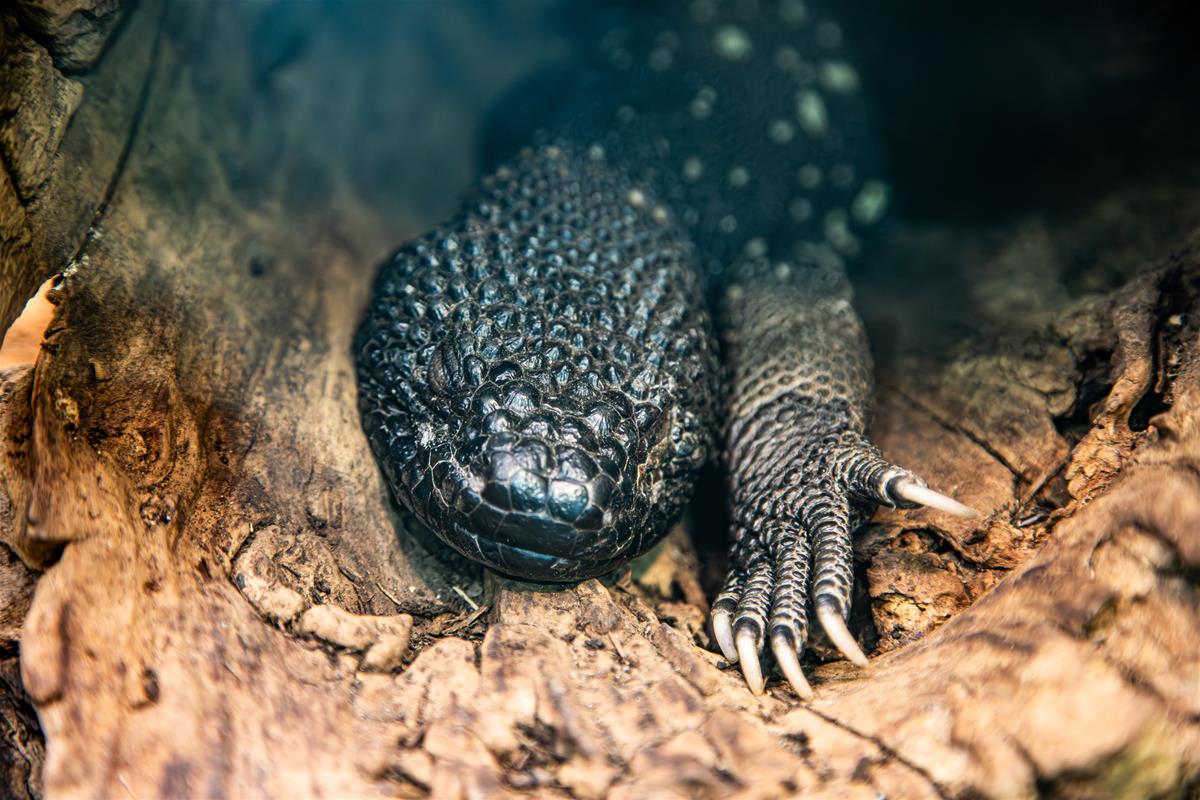

Location at the Zoo
Americas
Global Range
Central America
Guatemalan beaded lizard
Heloderma charlesbogerti
The Guatemalan beaded lizard is a rare and heavily built venomous lizard with a distinctive bumpy, beaded skin made of bony deposits called osteoderms. Adults typically reach 60 to 80 centimetres in length and weigh between 1 to 2 kilograms. Their colouration is mostly black with irregular yellow to cream-coloured markings, forming broken bands along the body and tail. Unlike many lizards, they are slow-moving and rely on stealth and venom rather than speed.
This species is one of only a few venomous lizards in the world and is closely related to the better-known Gila monster (Heloderma suspectum) of the southwestern United States. It is the only beaded lizard species found outside of Mexico.
Conservation Status: IUCN

Distribution
Endemic to the Motagua Valley in eastern Guatemala—an isolated and arid region with unique dry forest habitats.
Habitat
Inhabits tropical dry forests, thorn scrub, and rocky outcrops. It prefers areas with loose soil for burrowing and shelter, and seasonal variation is key to its activity patterns.
Diet
Carnivorous. Feeds primarily on eggs (reptile and bird), nestling birds, small mammals, and occasionally carrion. Their strong jaws and forked tongue help them locate and consume buried or hidden prey. They use venom to immobilize prey, though this venom is delivered through grooved teeth rather than injection.
Reproduction
Breeds during the rainy season. Females lay a small clutch of 6 to 12 leathery eggs in burrows, which incubate for several months. Hatchlings emerge fully independent and are miniature versions of the adults, already venomous and capable hunters.
Adaptation
- Venomous saliva helps subdue prey and acts as a defence
- Beaded, osteoderm-covered skin provides physical protection
- Burrowing behaviour allows escape from heat and predation
- Slow metabolism and long lifespan (up to 30+ years) support survival in sparse environments
- Forked tongue and Jacobson’s organ allow advanced chemical sensing
Threats to Survival
- Habitat loss from agriculture, ranching, and development
- Persecution by locals who mistake it for dangerous or evil
- Very limited range makes it extremely vulnerable to environmental changes
- Illegal pet trade targeting rare and exotic reptiles











